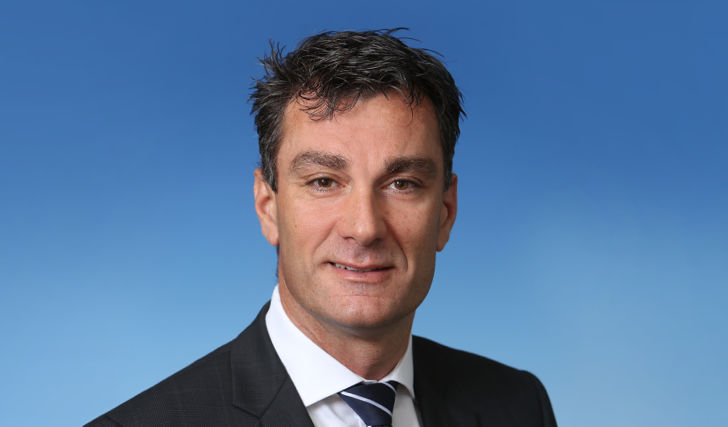Canada’s three largest life insurers held their annual meetings recently, where their presidents addressed shareholders to discuss earnings, company success stories and plans for the future.
Technological advances at each company is a prevalent theme this earning’s season, along with talk about Asia’s growing middle class, Canada’s aging population and drug costs.
Individually, each president’s address had its own tone: Great-West Lifeco is on the acquisition path around the world, while Manulife appears focused on the customer experience.
At Sun Life Financial, president and CEO Dean Connor says growth for the company will continue to come from three, long-term macro drivers of demand, including aging baby boomers in Western markets, the downloading of responsibility from governments and employers to individuals, and a “remarkable shift” of millions of Asian consumers to the middle class.
Retirement gap
At Manulife, president and CEO Roy Gori had similar remarks. “By 2025, Asia’s middle class is expected to double in size to 2.8 billion people, accounting for 60 per cent of the world’s middle class. This large population wants and needs both insurance and wealth management products. Second, the world’s population is aging quickly,” he says. “Today there are more than 900 million people aged 60 and over. By 2050, this number will rise to more than $2-billion, creating a retirement gap projected to be $400-trillion. Our global franchise is positioned very strongly to capitalize on these significant trends.”
Outside of Asia, Great-West Lifeco would appear to be the busiest company on the mergers and acquisitions front. President and CEO, Paul Mahon says the company continues to see opportunities for growth by acquisition in the United States and the United Kingdom.
In Ireland, as is the case in Canada, he says there are limited opportunities to acquire for scale, meaning growth will need to be organic, helped by targeted acquisitions that extend capabilities or reach.
To that end, the company recently announced a strategic investment in the country’s largest Irish-owned, independent financial consultancy, Invesco, in an effort to extend the reach of its insurance company, Irish Life. The 2017 acquisition of Financial Horizons Group in Canada is another example of this strategy in action. In Canada, the company’s real estate management company, GWL Realty Advisors also acquired U.S.-based EverWest.
“This acquisition provides us with a real estate platform in the U.S. and opens up investment opportunities for our Canadian customers,” he says. “Beyond these targeted acquisitions, our Canadian operations are making investments to drive innovation, create efficiencies and to digitally enable customers, advisors and employees.”
At other companies, execs provide a more detailed view of their technological advances.
Advanced analytics
At Manulife, Gori says the company is using advanced analytics to eliminate or dramatically reduce the amount of medical testing required to issue new life policies.
Although he does not say what the company is working on to address rapidly changing consumer preferences, he points out that connected devices have outnumbered people since 2008. In 2017, the average person spent up to two hours and 15 minutes on social media each day – about one month each year. He says eight in 10 customers expect to use a digital channel for insurance interactions like buying a policy or filing a claim.
“Customers expect fast, easy, seamless and personalized service, whether they’re downloading music, buying groceries or shopping for life insurance and other financial services,” he says. “We see great opportunity presented by this technological shift.”
Online sales
In Canada, Sun Life launched Sun Life GO, which enables customers to buy life insurance online. In Asia, Sun Life customers of certain telco partners in three different countries can now buy insurance using their mobile device. The company has also launched apps in Canada, Hong Kong, the Philippines, Malaysia, Indonesia, India and the United States. Connor says the company also continues to invest in digital tools to help advisors around the world to be more productive and proactive.
“Along with digital and technology, we’re also investing in talent and culture,” he says. “We have added nearly a thousand new jobs over the past three years in Canada to advance our innovation, digital, data and client experience capabilities.”
Great-West Lifeco, meanwhile, has partnered with digital health services provider, Dialogue, to give group benefits plan employees and their families access to medical professionals who provide similar service that a patient might receive at an in-person appointment.
Rising drug costs
Finally, rising drug costs were addressed by both Connor and Mahon. “In addition to the investments we are making in our business, we are also taking a leadership position on public policy issues affecting our customers,” Mahon told shareholders. “In Canada, we’re working alongside the industry and with regulators to address the high cost of drugs for the benefit of all Canadians. We’re also working with policy makers on closing the gap for the approximately 700,000 Canadians who have no drug coverage, and others whose coverage is insufficient.”
Connor’s remarks provide a little more insight into the public policy machinations currently underway.
“There are two serious problems that need to be solved,” he says “First, more than four million Canadians are not enrolled in a plan or don’t have access to coverage, and we need to fix that. Second, we have two-tier medicine prices in Canada – lower prices negotiated by governments who’ve banded together for bulk price negotiations, and higher prices charged by pharma companies to the remaining buyers. We need to bring all buyers into the same tent, to negotiate equally low prices for Canadians.
“We don’t think the solution is to abandon the plans that 25 million Canadians are happy with today,” he says of a current federal proposal which recommends the establishment of a universal single payer, public prescription drug coverage program.
“For one thing, they would not be happy to find out that the typical provincial drug formulary only covers 4,400 medicines, versus the 14,000 that a typical health plan covers today, but we can leverage the best of what works in the public and private system today, expanding it to increase access to coverage, and combine our purchasing power to achieve equally low medicine prices for all Canadians. That would be far more affordable than the cost of having governments take over all of pharmacare. We are keen to help solve what is a solvable problem.”









